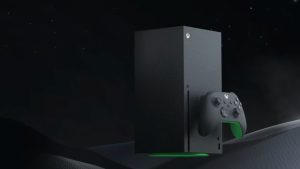
Regardless of whichever side of the debate you fall on, no one can deny that the PlayStation 4 is a significant step up from the PS3. In fact, when viewing the tech demos and games showcased since its official reveal more than a month ago, it’s impossible not to look back in awe. The amazing thing is we haven’t even seen the true potential of the device – and we may not see it for many years to come.
However the many demos showcased highlight that not only will the PS4 be able to significantly up the amount of detail on screen – with more particle effects, greater draw distances and a larger number of character models on screen – but that it will significantly increase the realism of its environments and characters. Well, as realistic as a flaming demon lord could look in the real world that is. This goes double for the facial capture, which has moved up the chain of motion capture and scanning to support a higher number of triangles with each new generation.
But just how does the PS4 measure up to the previous generations? What kind of evolutions have we seen since? We take a look back at previous PlayStation facial model tech demos to compare just how far the PS4 has come – and how much of a leap it is over the PS3.
Let’s start with Metal Gear Solid for the PlayStation. It’s amazing how for a game praised on the basis of its emotive storytelling and deep characters that the facial emotions look so blocky now. Of course, they looked blocky back then as well. Capturing facial expressions using motion capture just wasn’t practical in the old days.
With the PlayStation 2, the number of polygons was upped significantly. A full 3D scan of a model’s face was now at hand to be peppered with details. Cue the introduction of shader technology that gave detail and texture to the features, adding those wrinkles for realism and individual hairs on the eyebrows and head.
Of course, modelling and rendering those individual hairs was still incredibly tough – it’s actually not until AMD’s TressFX technology that we can see a realistic depiction of 3D modeled hair in a video game.
But the foundation was set for the PlayStation 3. David Cage of Quantic Dream deeded to take the technology for a spin and produced a tech demo for KARA. One can see the basis of KARA and how it applies to Beyond: Two Souls’ protagonist (at least in how vaguely similar they look).
It’s here that the amount of triangles added became an almost indiscernible mesh. Lighting and detail that realistically reflects off the iris in the eye gives it that extra hint of detail. The power needed to properly model detailed expressions was still slightly lacking. But hey, Beyond: Two Souls still looks pretty damn good.
That lack of power would also keep the system from properly rendering individual strands of hair, as seen in the Alfred Molina tech demo from E3 2005. While the texture quality and triangle count is high, with various wrinkles and even sweat visible, the hair was still just a neat clump of triangles.
At the PlayStation 4 reveal event, David Cage revealed the new engine that was being worked on at Quantic Dream. He also let us know about the triangle count on Beyond: Two Souls being 30,000 for a single model. He then showcased renders of an old man using the new engine.
The utter nuance of expressions and the significantly improved rendering of individual strands of hair was much better handled here. And while it may not look like a significant step up from the PS3 at first, looking at the two side by side showcases just how far the technology has come.
Again, this is only the beginning. If the PS3 is capable of something like Beyond: Two Souls and can play host (maybe) to games like Metal Gear Solid V and Battlefield 4, it will be interesting to see just what the PS4 is capable of.














